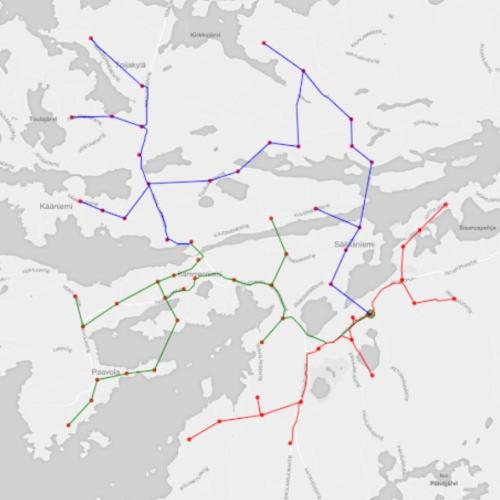Designing optimal networks comes with a number of challenges. Thorough manual designing is time-consuming and difficult. It requires systematic evaluation from numerous technical and economic viewpoints. In addition, the outcomes can be diverse with every network planner working in their personal way, which makes it difficult to compare the results. Yet every electricity utility faces the very same challenge: how to serve electricity consumers with short response times while keeping the costs as low as possible.
Automation is the key.
Optimization for Electricity Networks
Bring whole new efficiency and accuracy to your network designing with automated optimization tools. Network optimization can be used for both existing and new networks. As a result, utilities gain higher-quality network structures and keep network costs as low as possible over the entire network life-cycle.
You can easily auto-generate proposals for an optimal network structure, including suggestions for internodal connections, routing, and dimensioning of the lines based on electro-technical calculations. The optimization allows for setting utility-specific and case-specific requirements and rule sets, such as voltage and ampacity rules, reliability requirements (SAIDI), and preferred components and prices (lines and switches). Finally, the planner can review and refine the network plan with technical planning and analysis tools.
Network optimization aims at finding your optimal network based on the minimum life-cycle costs. This is a task where utilizing a computerized algorithm will have indisputable benefits compared to the manual process. Automated network optimization enables your utility to reach a higher raise level in decision-making, taking into account your expected investments as well as maintenance costs, operational costs or losses, and outage costs over the asset life-cycle.
For long-term planning, use the automation to efficiently find your target networks, that is, the overall optimal of your utility's network assets that you can then start to work towards.
In short-to-medium-term planning, take the target network into account, optimizing network switching, for example, in terms of the location, type, state of your switching devices, as well as the technical planning and pricing for your new connection points.
Make use of network optimization and minimize the life-cycle costs of your network in terms of underlying topology, switching and detailed routing of the lines. Consider various electricity uses, such as production (DER), consumption and micro-grids. The existing network can be taken into account as an underlying basis for expansion planning, as well as in overall network optimization on which existing parts to keep and for how long, and where to make new investments.











